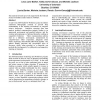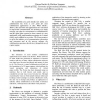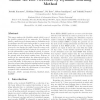14 search results - page 1 / 3 » Learning to impersonate |
ICML
2006
IEEE
14 years 5 months ago
2006
IEEE
Consider Alice, who is interacting with Bob. Alice and Bob have some shared secret which helps Alice identify Bob-impersonators. Now consider Eve, who knows Alice and Bob, but doe...
WINE
2010
Springer
13 years 2 months ago
2010
Springer
A common approach to analyzing repeated auctions, such as sponsored search auctions, is to treat them as complete information games, because it is assumed that, over time, players...
SIGCSE
2002
ACM
13 years 4 months ago
2002
ACM
As part of an NSF-funded IT Workforce grant, the authors conducted ethnographic research to provide deep understanding to the learning environment of computer science classrooms. ...
MMM
2005
Springer
13 years 10 months ago
2005
Springer
The availability of a good interface for online user collaboration has been a sore point for most collaboration applications to date. While MUD’s, MOO’s, IRC and other chat ap...
IJNSEC
2007
13 years 4 months ago
2007
This paper analyzes the blackhole attack which is one of the possible attacks in ad hoc networks. In a blackhole attack, a malicious node impersonates a destination node by sendin...




